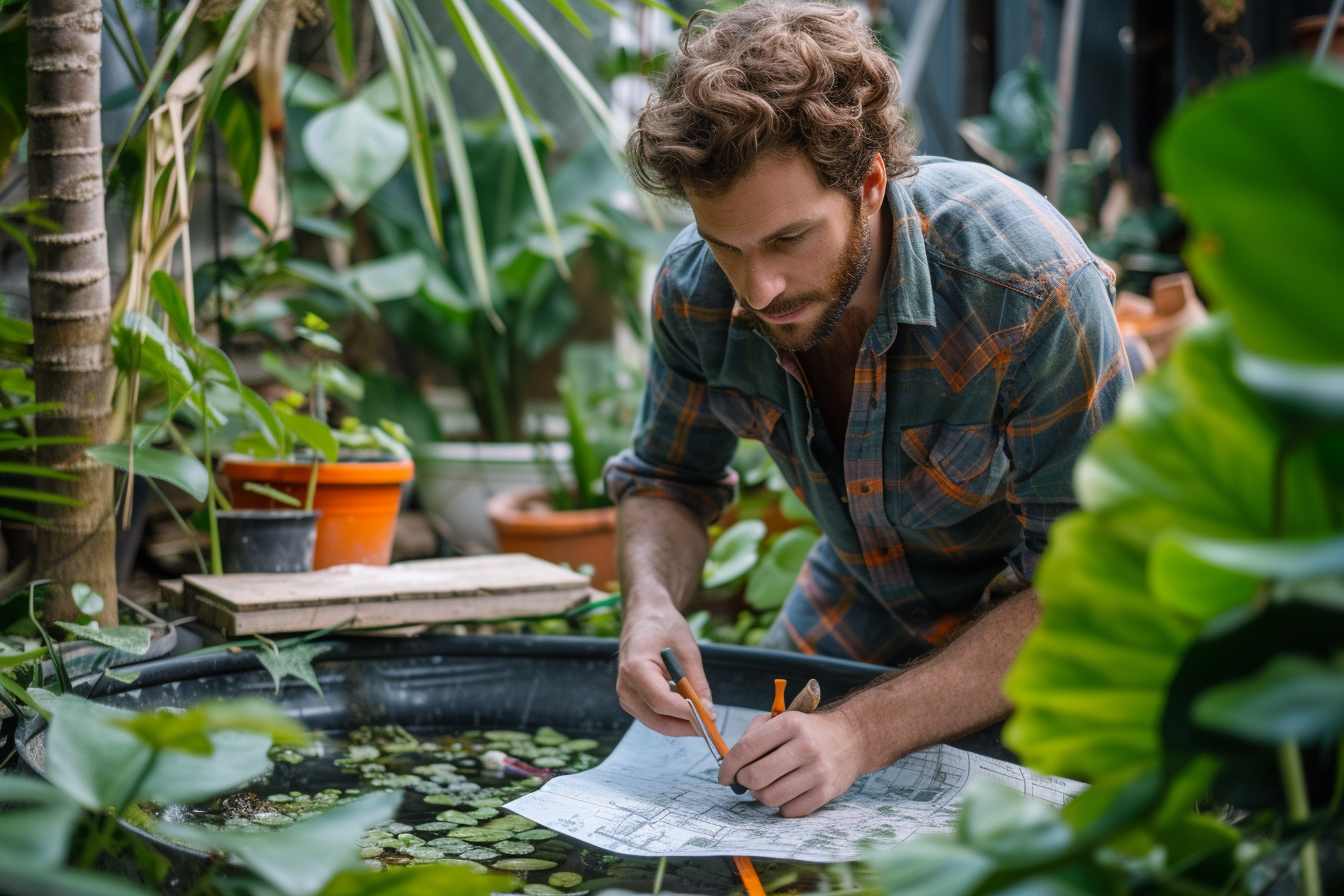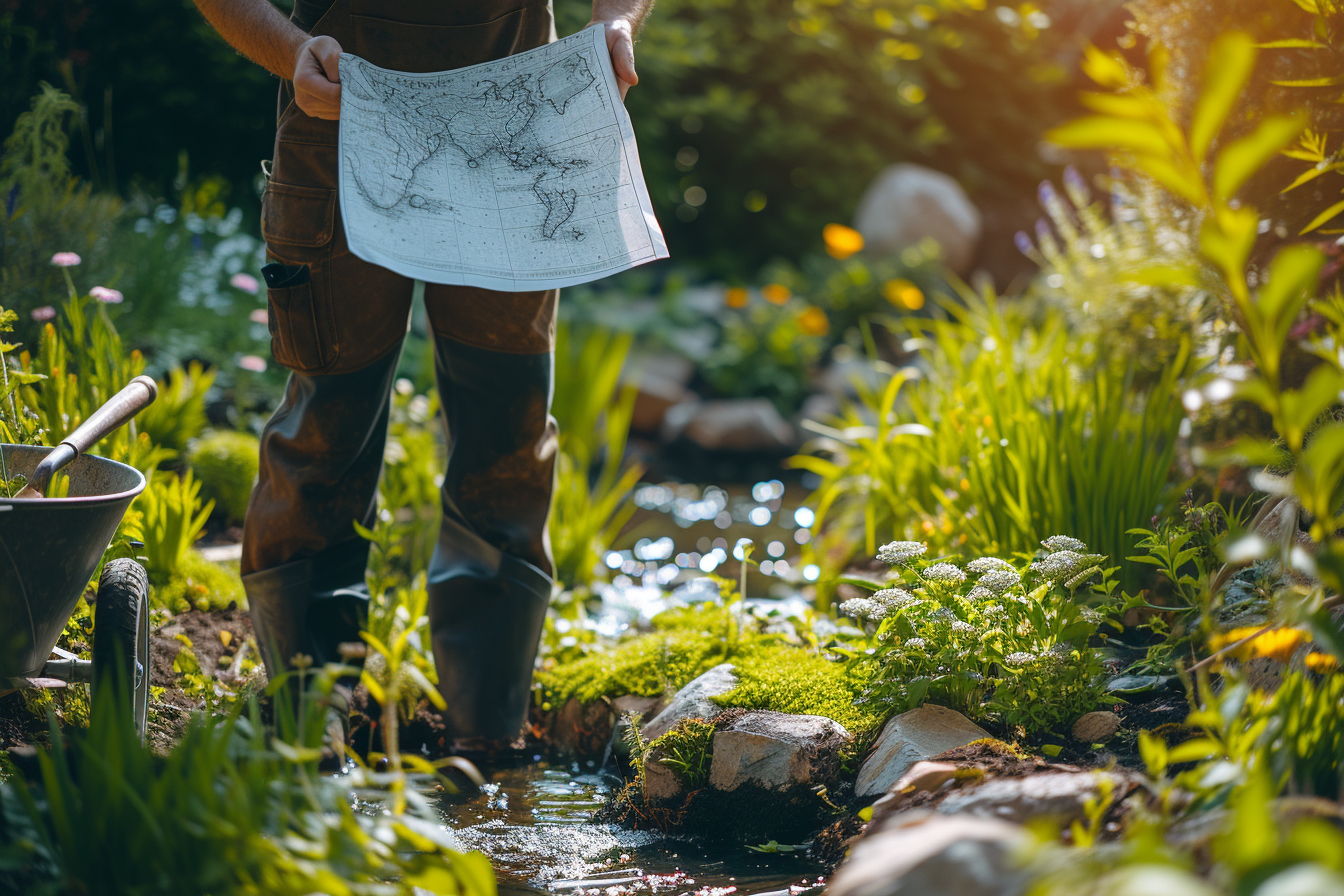
Building a garden pond can transform your backyard into a tranquil oasis, a habitat for wildlife, and a focal point for outdoor entertainment. If you are a DIY enthusiast looking to undertake this rewarding project, this comprehensive guide is tailored for you. We will walk you through each phase of pond construction, providing essential tips to help you craft a stunning water feature with your own hands.
Understanding the basics
Before you break ground, knowing the fundamentals is crucial. A garden pond can be as simple as a small water-filled container or as elaborate as a large, landscaped pool. The type of pond you choose to build will depend on the space available, your budget, and how you intend to use the space – whether for keeping fish, growing aquatic plants, or simply for aesthetic pleasure.
Planning your pond
Selecting the Location: Position your pond where it will receive adequate sunlight – at least 5 to 6 hours a day – if you plan to grow aquatic plants. Avoid areas with heavy tree coverage to minimize debris and maintain a balanced ecosystem.
Determining Size and Depth: The size of your pond should complement the scale of your garden. Deeper ponds are generally required for koi fish, while a shallow pond is sufficient for plants and small wildlife.
Design and Shape: Consider using a garden hose or rope to outline the shape of your pond on the ground. This visual aid can be adjusted until you are satisfied with the design. Freeform shapes often look more natural, while geometric shapes can complement formal garden layouts.
Materials and tools required
Quality Pond Liner: Choose a durable liner designed for ponds to prevent leaks and protect wildlife. PVC and rubber liners are popular choices.
Underlayment: Use underlayment beneath the liner to protect it from punctures. Old carpet or newspapers can serve as a DIY alternative but may be less effective.
Pond Pump and Filter System: Select a system that can handle the volume of your pond to maintain clean, healthy water.
Edging Materials: Rocks, pavers, or plants can be used to create a natural transition between the pond and the rest of the garden.
Basic Gardening Tools: Shovels, rakes, and wheelbarrows will be needed for excavation and landscaping.
Excavation and preparation
Digging the Pond: Excavate the area to your desired depth and shape, incorporating shelves for plants and ensuring the pond edges are level. Slope the sides gradually to allow for easy access for wildlife.
Installing Underlayment and Liner: Ensure the pond bed is free from sharp stones or roots and then lay the underlayment. Place the liner over the top, carefully molding it to the shape of the pond, and secure the edges.
Filling the Pond with Water: Once the liner is in place, begin filling the pond with water. As it fills, smooth out any wrinkles in the liner and adjust the fit around the contours of the pond.
Creating an ecosystem
Choosing Plants: Aquatic plants help oxygenate the water and maintain clarity. Water lilies, irises, and marginal plants are popular choices that provide shelter for wildlife.
Adding Fish: If you decide on a fish pond, avoid overstocking. Goldfish and koi are common selections, but always introduce them to the pond gradually.
Establishing Balance: Achieving a balanced ecosystem is vital. This means setting up a cycle where plant life and fish cohabit symbiotically, supported by the right pump and filter system to maintain water quality.
Landscaping and decoration
Edging the Pond: Use natural stones or plants to edge the pond and blend it into the surrounding landscape.
Creating Pathways: Construct pathways or stepping stones to allow for easy viewing and maintenance access.
Adding Lighting: Subtle lighting can enhance the pond’s beauty at night, making it a day-and-night feature in your garden.
Maintenance tips
Regular Cleaning: Remove debris, such as fallen leaves, and trim dead plant material to prevent decay and nutrient build-up.
Monitoring Water Quality: Test the water regularly for pH, ammonia, and nitrite levels, especially if you are keeping fish.
Seasonal Care: Prepare your pond for winter by removing sensitive plants and installing a heater or aerator if needed to keep a small area of the pond ice-free.
Troubleshooting common issues
Algal Bloom: A common issue is excessive algae growth. Introducing more plants, reducing fish feed, and using an ultraviolet clarifier can help.
Leaks: Inspect the pond for drops in water level and examine the liner for punctures if you suspect a leak.
Wildlife Management: Balance attracting desirable wildlife with deterring pests. Consider protective measures such as netting or fencing to safeguard your pond.
Final thoughts
Whether you are a seasoned DIYer or new to the world of gardening, building a garden pond is a rewarding task that enhances the aesthetic of your outdoor space and brings you closer to nature. With patience, planning, and attention to detail, you can create a serene water feature that will be enjoyed for years to come. The process requires hard work and dedication, but the result is a tranquil paradise that only amplifies the beauty of your garden. Engage with every step, cherish the progress, and revel in the knowledge that you’ve crafted something truly special.


